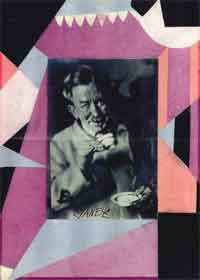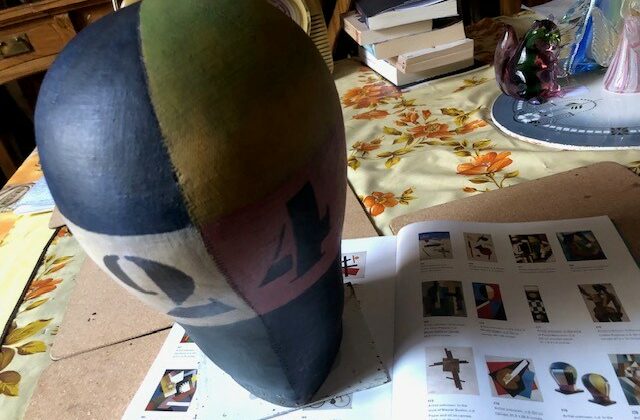Balla: circulation of energy, optical effects

“Balla colourful and bright ” at Galleria Cinquantasei in Bologna, was an extraordinary exhibition, because containing for the first time as many as 30 of the 100 classified collages never previously exhibited.
By Francesco Carelli
Professor of Family Medicine, Milan, Rome, Cluj
“Balla colourful and bright ” at Galleria Cinquantasei in Bologna, was an extraordinary exhibition, because containing for the first time as many as 30 of the 100 classified collages never previously exhibited.
Other works are presented from this futurist artist, but collage is at the centre of the exhibition in every way. For Balla, it is the best tool for focusing on topics such as speed, temporality and movement, abandoning any figurative reference to develop mechanical and optical aspects. A period ranging from 1914 to 1920, when the artist’s research was directed towards a geometric abstract model entirely unique to Futurism and beyond. The collages are different from the Cubist papier collé, which used different materials, intertwining true and false, to create effects between real and painted. Balla moves in other territories, using coloured paper and tempera on cardboard, as can be seen in Lines of speed + noise forms, created in 1915, where speed becomes a symbol analyzed in its simple linear evolution.
Indeed, for Balla creating collages is a way to geometrically simplify shape. Removing figuration favours rhythmic articulation, accompanied by the dynamic effect of colours. In his collages, abstract shape becomes dynamism, speed becomes geometric rhythm; and, together with colours, works are created that convey the idea of a circulation of energy. Even noise is transformed into form and is superimposed onto speed.
In some works Balla points towards the biological circle of natural forces such as in Line of speed + lanscape. In Balfiori the main subject is vegetation, natural forces that combine and multiply. With the flowers, a softness to the lines appears and broken rhythms disappear to find a deep harmony. In Blue Metallic Aeroplane, the foil recalls airplane metal and even the explosion of its lightness in flight, with straight and curved lines and triangles in play with the white, blue and light-blue colours, and sky and mechanical body combining to give life to the flight’s dynamism. In his collages Balla shuns an assembly of heterogeneous materials; he is more interested in expressive abstract research. In The War with oil paints and coloured paper on cardboard, chaos spreads out from the centre to become a fast vortex animated by powerful colouring using blacks, yellows and reds.
His abstract works are the evolution of a long study of light and colour which began in his pointillist period. He returns to the figurative at the end of thirties, a rethinking that was well described in his words: ” I had dedicated, with sincere faith, all my energy to innovative research but at one point I found myself with opportunists and careerists more interested in business than art; and in the belief that pure art lies in absolute realism, without which it falls into ornamental decorative shapes, I took up my earlier art again as the interpretation of naked, healthy reality “.



